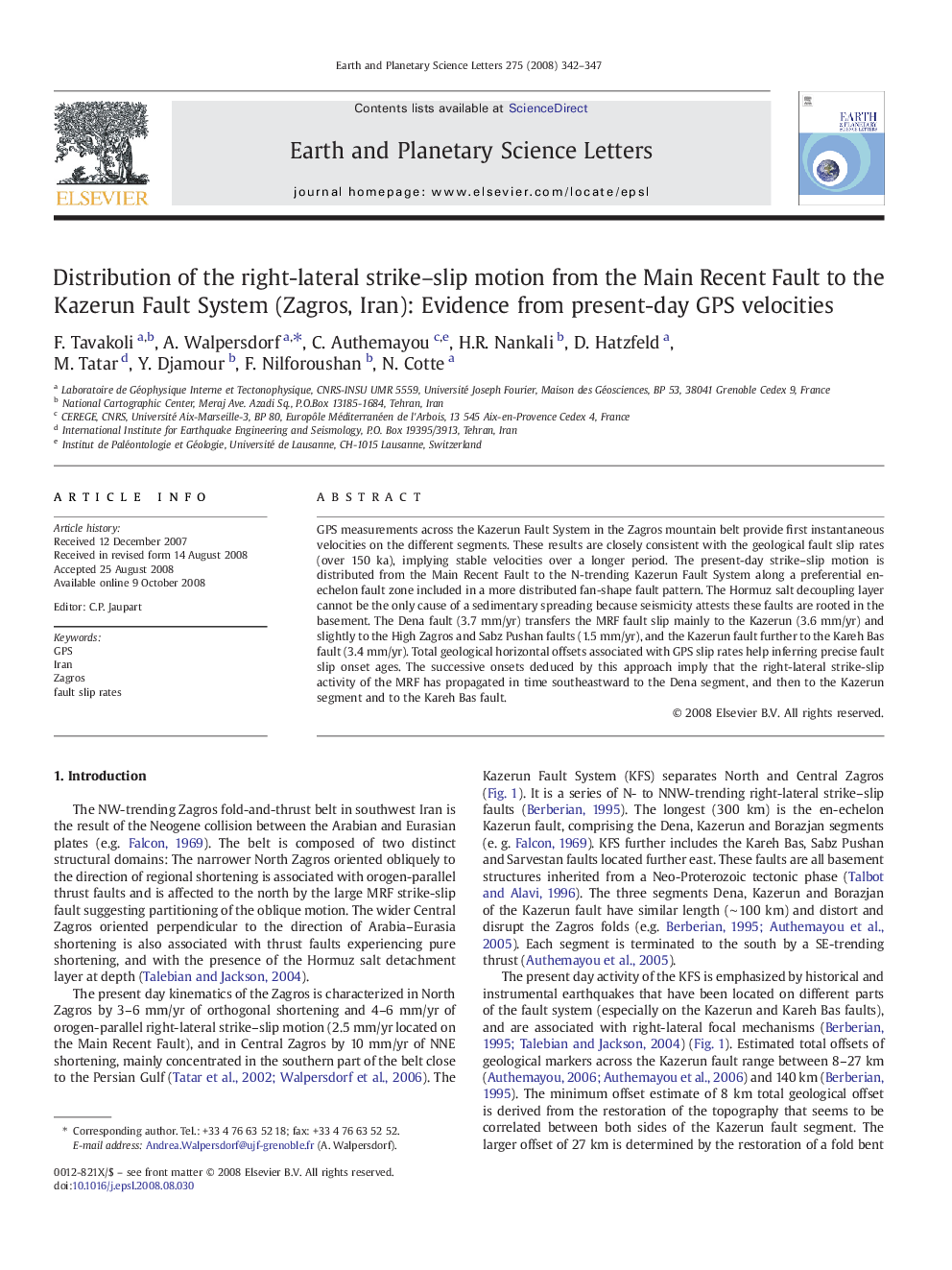| کد مقاله | کد نشریه | سال انتشار | مقاله انگلیسی | نسخه تمام متن |
|---|---|---|---|---|
| 4679638 | 1634885 | 2008 | 6 صفحه PDF | دانلود رایگان |

GPS measurements across the Kazerun Fault System in the Zagros mountain belt provide first instantaneous velocities on the different segments. These results are closely consistent with the geological fault slip rates (over 150 ka), implying stable velocities over a longer period. The present-day strike–slip motion is distributed from the Main Recent Fault to the N-trending Kazerun Fault System along a preferential en-echelon fault zone included in a more distributed fan-shape fault pattern. The Hormuz salt decoupling layer cannot be the only cause of a sedimentary spreading because seismicity attests these faults are rooted in the basement. The Dena fault (3.7 mm/yr) transfers the MRF fault slip mainly to the Kazerun (3.6 mm/yr) and slightly to the High Zagros and Sabz Pushan faults (1.5 mm/yr), and the Kazerun fault further to the Kareh Bas fault (3.4 mm/yr). Total geological horizontal offsets associated with GPS slip rates help inferring precise fault slip onset ages. The successive onsets deduced by this approach imply that the right-lateral strike-slip activity of the MRF has propagated in time southeastward to the Dena segment, and then to the Kazerun segment and to the Kareh Bas fault.
Journal: Earth and Planetary Science Letters - Volume 275, Issues 3–4, 15 November 2008, Pages 342–347